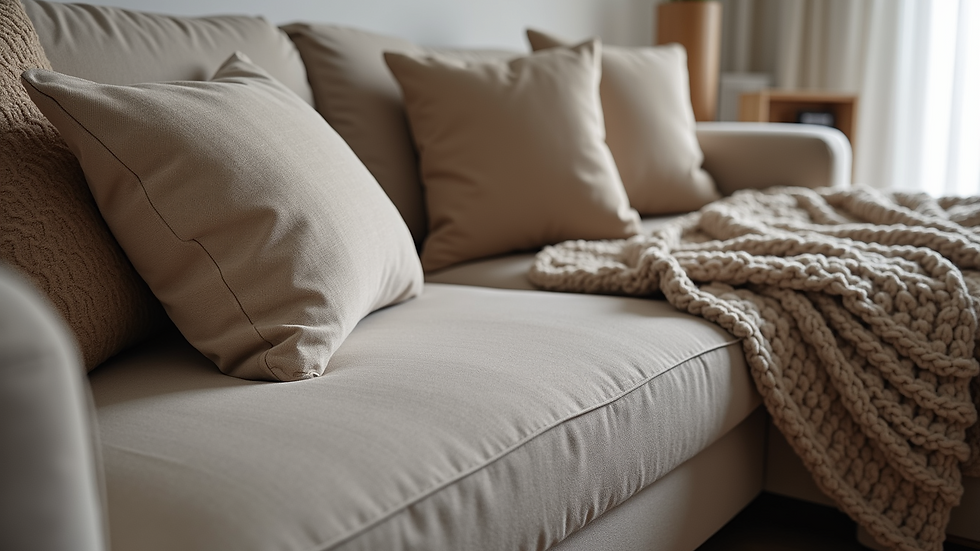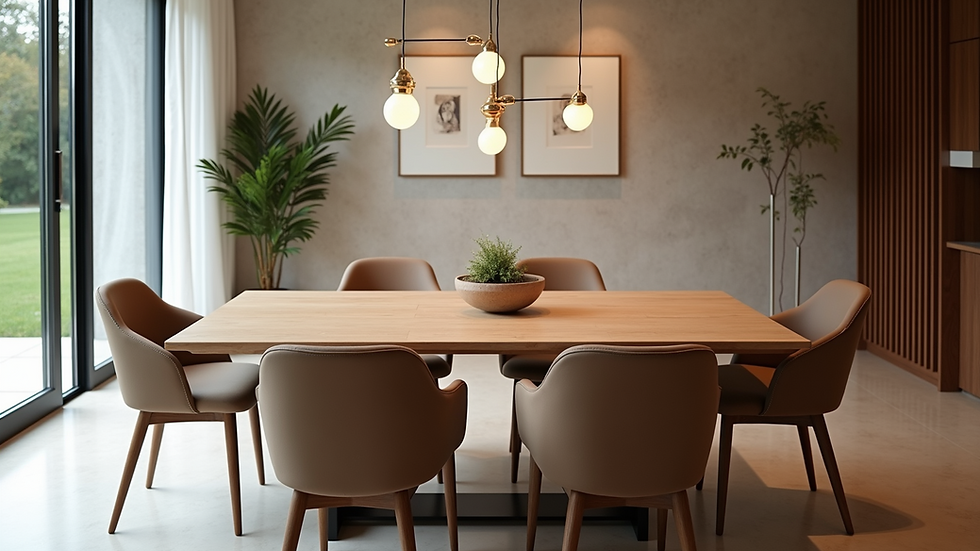Creating a Cohesive Look for Your Home: Tips and Ideas
- Be-Studio

- Sep 22
- 4 min read
Creating a cohesive look for your home can transform your living space into a harmonious and inviting environment. When every room flows seamlessly into the next, your home feels more spacious, balanced, and thoughtfully designed. Achieving this balance requires careful planning, attention to detail, and a clear vision. This guide will provide practical tips and ideas to help you create a cohesive look that reflects your style and enhances your home's overall appeal.
Understanding the Importance of a Cohesive Look
A cohesive look means that all elements in your home work together to create a unified aesthetic. This does not mean everything must match perfectly, but rather that colours, textures, and styles complement each other. When your home has a cohesive look, it feels more comfortable and visually pleasing.
To start, consider the overall mood you want to create. Do you prefer a calm and serene atmosphere or a vibrant and energetic space? Once you have a clear idea, you can select colours, furniture, and accessories that support this mood.
Tips for achieving a cohesive look:
Choose a consistent colour palette for the entire home or for connected spaces.
Use similar materials and finishes across rooms.
Repeat patterns or textures in different areas.
Maintain a balance between variety and uniformity to avoid monotony.

Living room showcasing a cohesive colour palette and furniture style
How to Use Colour and Texture to Create a Cohesive Look
Colour is one of the most powerful tools in creating a cohesive home. Selecting a colour palette that flows from room to room helps unify the space. Start with a base of neutral colours such as whites, greys, or beiges. These provide a calm backdrop and allow accent colours to stand out.
Add accent colours through accessories like cushions, rugs, and artwork. Choose two or three accent colours and repeat them in different rooms to create visual links. For example, a soft blue in the living room cushions can reappear in the bedroom curtains or kitchen accessories.
Texture also plays a vital role. Mixing textures adds depth and interest without disrupting cohesion. Combine smooth surfaces like glass or metal with soft fabrics such as velvet or linen. Wood finishes can add warmth and natural appeal.
Practical ideas:
Use a neutral base colour on walls and larger furniture pieces.
Introduce accent colours in smaller items and décor.
Mix textures like a wool rug with a leather sofa.
Use natural materials like wood and stone to add warmth.

Close-up of cushions and throws showing varied textures
Do you need qualifications to be an interior designer?
Many people wonder if formal qualifications are necessary to become an interior designer. While there is no strict legal requirement in many places, having a qualification can significantly enhance your skills, credibility, and career opportunities.
Formal education in interior design covers essential topics such as space planning, colour theory, materials, and building codes. It also teaches you how to use design software and manage projects effectively. Many employers and clients prefer to work with qualified professionals.
However, passion, creativity, and practical experience are equally important. Some successful interior designers start with self-study, apprenticeships, or related fields like architecture or art.
If you are considering a career in interior design, research local requirements and consider enrolling in accredited courses. This will provide a solid foundation and help you build a professional portfolio.
Incorporating Furniture and Accessories for Unity
Furniture and accessories are key elements that can either enhance or disrupt a cohesive look. To maintain unity, select pieces that share similar styles or finishes. For example, if you prefer a modern aesthetic, choose furniture with clean lines and minimal ornamentation.
When mixing styles, do so thoughtfully. Combining contemporary and vintage pieces can work well if they share a common colour or material. Avoid overcrowding rooms with too many different styles, which can create visual chaos.
Accessories like lamps, vases, and artwork should complement the overall theme. Use repetition to tie rooms together - a particular pattern or colour in cushions can be echoed in wall art or rugs.
Actionable recommendations:
Choose furniture with consistent finishes (e.g., all wood tones or all metal).
Limit the number of different styles to two or three.
Use accessories to repeat colours and patterns.
Keep larger furniture neutral and add personality with smaller items.

Dining area featuring matching chairs and a coordinated centrepiece
Tips for Maintaining Flow Between Rooms
Creating a cohesive look also means ensuring smooth transitions between rooms. This is especially important in open-plan homes or spaces with connected rooms.
One effective way to maintain flow is through flooring. Using the same flooring material throughout connected areas creates a visual link. If this is not possible, choose complementary colours and textures.
Doorways and archways can be framed with consistent trim or moulding styles. Lighting also plays a role - similar fixtures or bulbs with the same colour temperature help unify spaces.
Consider the layout and sightlines. Arrange furniture so that when you look from one room to another, the style and colour scheme feel connected.
Practical flow tips:
Use consistent flooring or rugs to link rooms.
Match trim and moulding styles.
Choose lighting fixtures with a similar design.
Arrange furniture to create clear sightlines.
By following these tips, you can create a home that feels cohesive, comfortable, and stylish.
Creating a cohesive look for your home is a rewarding process that enhances both aesthetics and comfort. By carefully selecting colours, textures, furniture, and accessories, and paying attention to flow between rooms, you can achieve a harmonious space that reflects your personality. For more expert advice and inspiration on interior design, explore trusted resources and consider consulting professionals to bring your vision to life.



